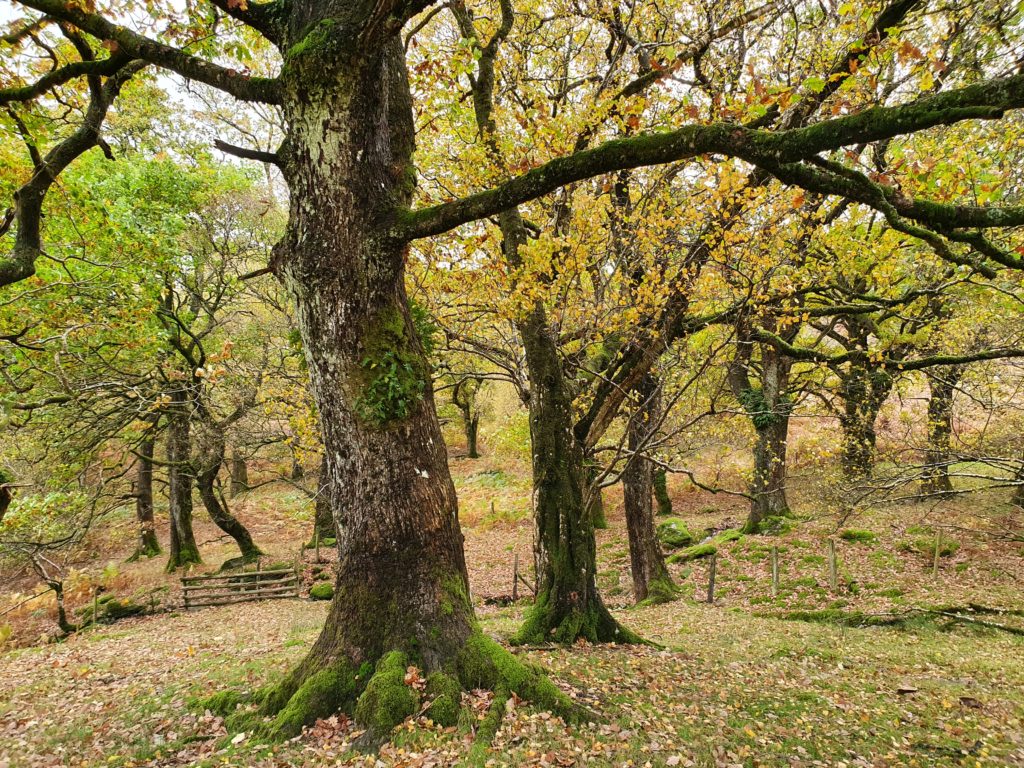
The Elan Estate and the surrounding area was covered in oak, birch and hazel woods until man’s clearances for agriculture started about 4,000 years ago. On the Elan Estate there was 20 years ago originally 350 hectares of coniferous woodland and 100 Hectares of broadleaved woods. Most of the woods are owned and managed by Dwr Cymru Welsh Water, first and foremost for their wildlife. The broadleaved woods are all in Sites of Special Scientific Interest and known as “semi-natural ancient woodlands”. The dominant species is sessile oak. It differs from pedunculate oak in having short stems on the acorns and long stems on the leaves; in pedunculate oak this is reversed.
The conifers that have been planted over the last 150 years include species such as larch, norway and sitka spruce, douglas fir and scots pine. Many of these have been replanted with Native locally collected seed to create native woodlands. (Thus there is now less than the 350ha of conifers forest as its been transformed to native). Only one Conifer plantation will be retained as it is now designated a Site of Special Scientific Interest due to its lower plants. This woodland is to be managed for its wildlife before any commercial gain. It’s a great place to see crossbill, siskin and woodcock.
The Native broadleaved trees include sessile oak, downy birch, hazel, ash, goat willow, rowan, hawthorn, blackthorn and alder, whilst some beech, sycamore and chestnut have been introduced, especially when there were Estate houses within the Estate prior to the Valleys being flooded.

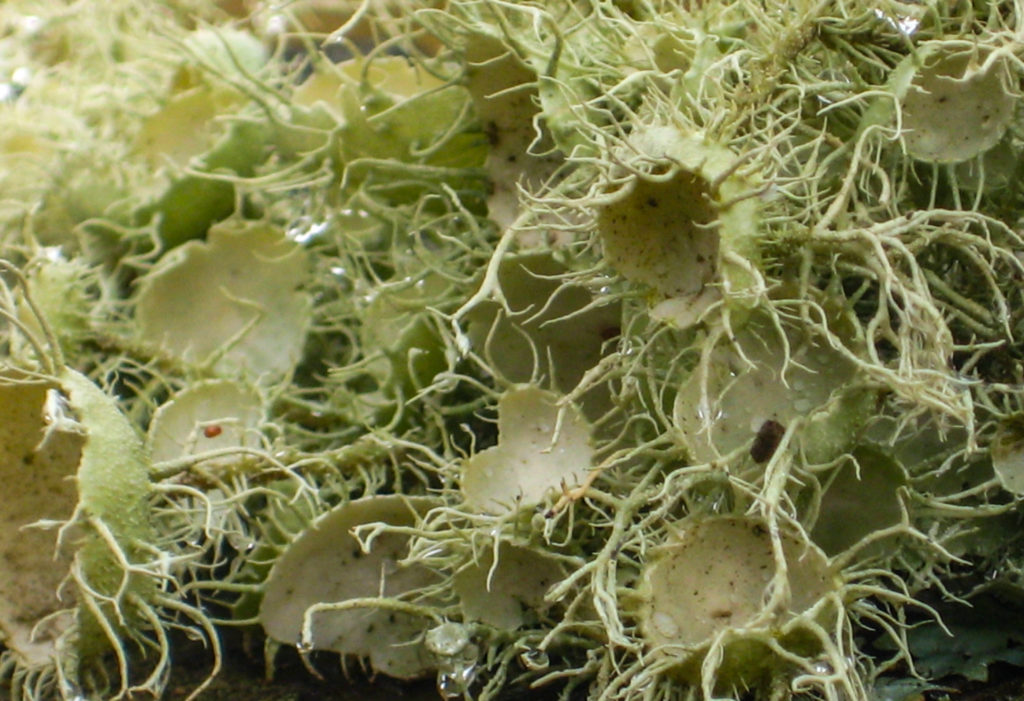
The most important wildlife of the ancient woodlands is the mosses, lichens, ferns and fungi. They often grow all over the trees because of the damp climate and the comparative lack of air pollution. The range of plants found in the ground layer varies according to the underlying soil type and degree of grazing from bluebell-bramble-fern, bilberry communities through grass and bracken dominated ones to heathy moss-dominated areas.
Woodlands with structural diversity will provide a much richer invertebrate habitat than stands of trees of uniform age and height. Unfortunately, non-intervention is now rarely likely to provide adequate diversity in the majority of surviving British woodlands, so active management is needed. The Elan Valley Woodlands have had much surveying undertaken in the past and there are plans to undertake further management through the Heritage Lottery Project.
Dead wood is an essential component of woodland and can be easily overlooked and cleared away as unsightly or on the grounds of safety or neatness. As a result, invertebrate species that rely on dead wood are now some of the most threatened in Britain. In the Elan Valley we try to retain as much of the dead wood habitats within the woodland. This can include dead branches, stems and standing trees.
The Elan Valley Woodlands are a very important habitat for the Pied Flycatcher which returns to breed each year. Other birds you will find in the woodlands are wood warbler, Redstart, Tawny Owl and Spotted Flycatchers (edge habitat).

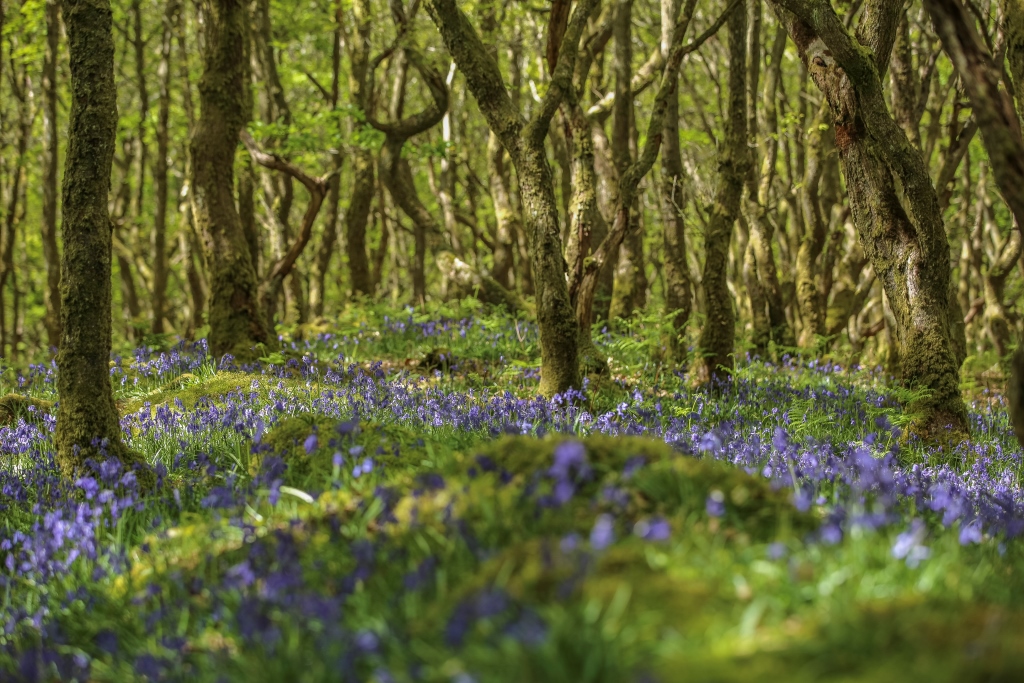
Our trees form semi ancient natural woodlands, conifer and ffridd on the Estate. But what is ffridd (Coedcae)? It is a diverse mixture of grass and heathland with bracken, scrub (often hawthorn and gorse) or rock exposures and may also include flushes, mires, streams and standing water.
The first written usage of the habitat ffridd dates back to the 14th Century in Wales and it has come from the Middle English word ‘Frith’ meaning woodland or wooded countryside. The Welsh ‘ffridd’ may originally have had a ‘woody’ connotation, similar to that of the word ‘Coedcae’, meaning wood or trees within a field.
It is a habitat which is a very important component of the Welsh countryside, with an historic, cultural, wildlife and visual importance. The ffridd is an important ‘corridor’ in the countryside and provides a link between lowlands and upland which helps animals and plants move around, shelter and provides a vital food resource.
In the Valley the ffridd provides essential home to the Welsh Clearwing moth, Climbing Corydalis Weevil, Small Pearl Bordered and Dark Green Fritillary. Moths and butterflies depend on our ffridd as it has this mosaic of open canopy bracken, flower rich patches, scree and damper areas.
Birds such as stonechat, Whinchat, tree pipit, Ring Ouzel and fieldfare are found within ffridd. Along the tops of the hills and ffridd it is common still to hear the cuckoo during the month of May and to glimpse Merlin as they hunt in the trees and moorland for meadow pipits. Under the bracken and within the grasses there are important assemblages of grassland fungi and lichens to be discovered.
Early in the breeding season, ring ouzels can be found foraging for invertebrates on closely grazed grassland, and patches of bracken which provide them with cover. Later in the season, they feed on rowan and hawthorn berries, so a mosaic of both vegetation type and structure is critical to their breeding success. Though it has been a number of years since Ring ouzel have been recorded as still breeding the habitat being maintained in good condition is vital.
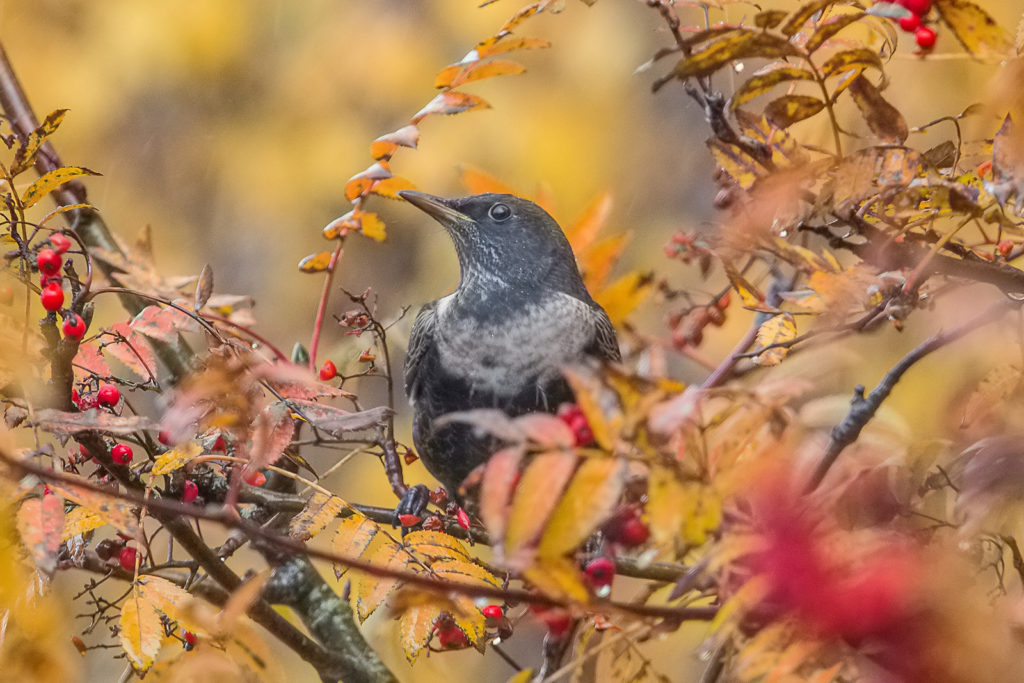
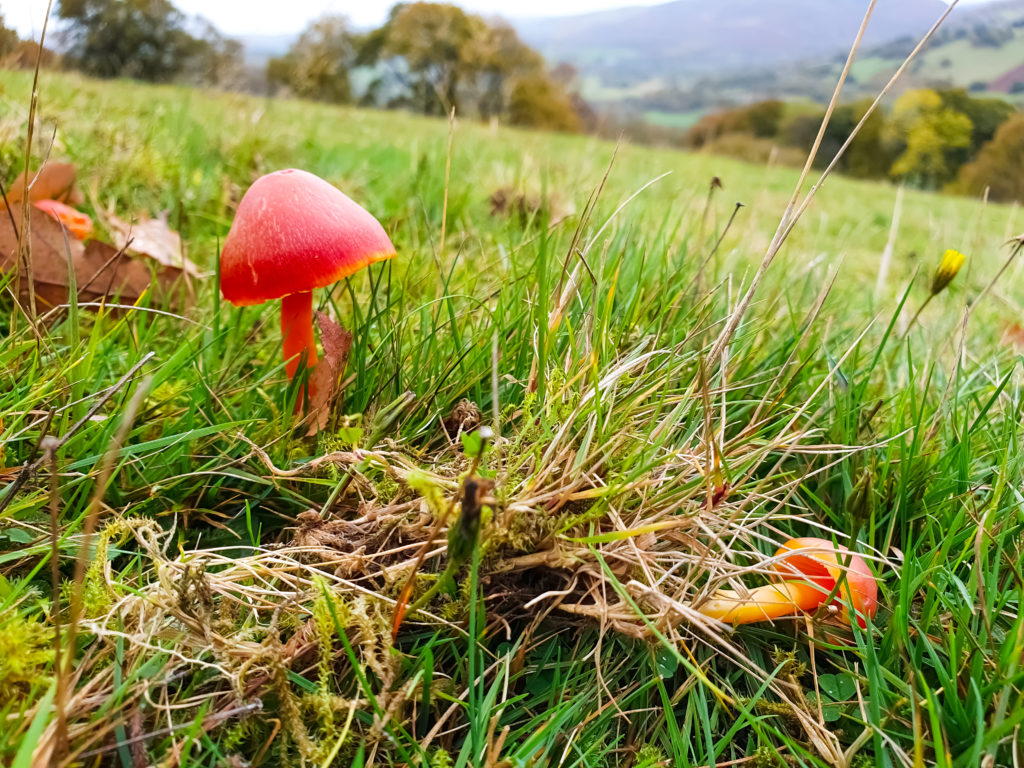
Ffridd supports significant lichen interest in many parts of Wales, mainly associated with rock habitats (outcrops, boulder & scree). A number of nationally scarce species seem particularly associated with upland fringe of low to middle elevation.
Some of our mammals such as the badger and fox choose the bracken and sloping land to create their homes under cover. There is an abundance of voles and shrews.
Ffridd in the Elan Valley has an important job of connecting the woodland areas together and creating the continuous means for animal movement. Much ffridd is located on the tenanted farms and links the land together. Much work had been undertaken by farmers to plant up areas of ffridd in the catchment.
So as you next drive around the Elan and Claerwen Valleys take a little upward glance and a little note of this important habitat above the roads in which you drive.
